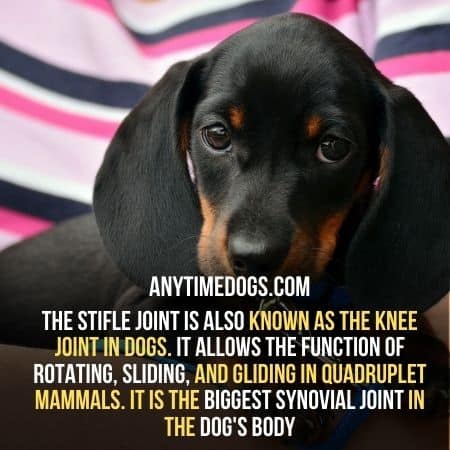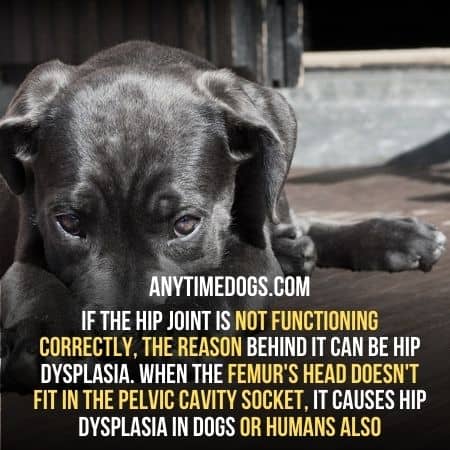You may often find yourselves asking some common questions about your dog. Like “do dogs have knees.” Since they have four limbs, there must be four knees.
Well, this isn’t entirely true.
It is a common misconception that their four-legged friend will have four knees. While some of the people out there are utterly confused, either dogs have them or not at all.
The anatomy of dogs varies according to their breeds. However, there are specific physical characteristics that are similar in every kind.
If we talk about knee joints, they are similar in all breeds.
It is for the fact that dogs share almost the same physiology and morphology as us. Having four limbs doesn’t mean that they have the same joints in all four.
And thus, dogs have only two knees like us. Dogs have small, tight knees. The hind ones are rigid, while the front ones are a little loose.
There might be some questions coming into your mind, like where the knees are? What kind of joints are there? And many more!
So, don’t worry, we have got you all covered in this article!
3 Main Types Of Joints In Dogs
Generally, there are three types of joints. These are divided further according to the functions.
However, the critical joints are:
1. Synovial Joints:
These joints provide the greatest range of movement. If two bones join together with synovial joints, the cartilage covers the ends.

Between the two ends of the bones, there is a joint capsule. Inside these capsules is a synovial fluid that reduces friction.
2. Fibrous Joints:
They have limited movements as they are joined together by tight fibrous tissue. Fibrous joints are a part of the skull.
3. Cartilage Joints:
These joints allow minimal movement. And forms when two or more bones attach with cartilage.
Where Are Dog’s Knees Located?
You must be wondering if dogs have four limbs. Where even are their knees? Because their four legs aren’t indeed legs.
The simple answer is; dogs have knees located in front of their hind limbs. The forelimbs are their legs, and their hind limbs serve the function of arms.
These joints are below the upper thigh and do the same functions as in humans.
Where Can You Find Dog’s Elbows?
In dogs, the front leg acts as elbows. It is just below the chest in the back of the front legs. Like knees, dog’s elbows also have the same kind of human bones, which are:
- Radius
- Ulna
- Humorous
These bones connect with the help of “ball and socket” joints.
Joints Related To Fore Limbs In Dogs
Like humans, forelimbs form the elbows of the dogs and consists of the following joints:
1. Carpal Joint:
It is the joint where Radius and Ulna join together with seven small carpal bones. These joints help the dog in movements and prevent it from falling.
2. Elbow Joint:
The formation happens with the farthest end of the humerus and the nearest end of the radio ulna.
The three elbow bones must grow equally. Otherwise, it can cause disability.
Bones In Hind Limbs Of Dogs
Dogs have complex leg anatomy, and it is no different from humans. It consists of the following bones:
- Tibia – it is the largest bone in the leg. It is the shin bone located in the lower leg.
- Fibula – it is known as the calf bone and runs beside the tibia. The Fibula is comparatively smaller than the tibia.
- Patella – Patella is a small bone that serves as a knee cap. It is at the end of the femur above the stifle.
If your dog suffers a dislocated patella, it means he is suffering from “luxating patella.”
- Tarsals – these bones are in the midfoot and hindfoot both, near the ankle, with seven in each leg.
- Meta tarsals – these connect the ankle with the toes. They are 5 in number in each limb.
- Phalanges – just like in humans, phalanges are located in fingers. Likewise, in dogs, these make up the toes. They connect with the metatarsals to form the paw of the dog.
Joints Related To Hind Limbs In Dogs
These bones cannot perform the functions separately. To connect them, several joints come together. Together, it completes the structure of hind limbs in dogs.
These joints are:
1. Stifle Joint:
The stifle joint is also known as the knee joint in dogs. It allows the function of rotating, sliding, and gliding in quadruplet mammals. It is the biggest synovial joint in the dog’s body.

The stifle joint joins three bones, femur, patella, and tibia. The wide range of motions is the reason that injuries can occur easily in this area.
2. Hock Joint:
The hock joint is also known as the ankle joint in dogs. It connects the paw with the shin, which consists of the Tibia and Fibula.
This joint remains in place because of the ligaments present in the joints’ inner and outer sides.
Dogs put pressure on these joints when they have to stand steady.
Hock instability occurs due to the tearing of ligaments or fractures. These ligaments are responsible for holding the joints in one place.
3. Hip Joint:
The circular head of the femur fits into the pelvic cavity called the acetabulum. Together it forms the hip joint.
It performs the function of stability and weight-bearing more than movements.

If the hip joint is not functioning correctly, the reason can be hip dysplasia. When the femur’s head doesn’t fit in the pelvic cavity socket, it causes hip dysplasia. Another reason can be the poor muscles of that particular area.
It can be hereditary or due to obesity, ligament tear, exertion at a young age. This problem is common after your dog reaches 18 months of age.
It is common in medium-large bred dogs like German shepherds, labs, Rottweiler’s. But, smaller breeds like pugs and spaniels are not behind.
What Knee Injuries Are Common In Dogs?
Dogs are very active, friendly, and playful animals. While they are running around, there can be accidents that can lead to knee injuries.
These damages can look like:
1. Trauma:
It is a fact that obesity in your canine friends can lead to knee problems. Apart from that, excessive running or certain angles can also cause trauma.
These traumas can occur from knee sprains or ligament tears. It occurs due to the twisting of ligaments.
Ligament tears can also cause cartilage damage. If left untreated, it can cause osteoarthritis as well.
Symptoms Of Sprains And Ligament Tears:
- Swollen joint
- Limping
- Favoring a limb
- Restricted movements
2. Fractures:
Breaking of bones is not a rare sight in dogs. Their playful nature can get them into trouble sometimes.

If fractures are not treated at the right time, it can cause arthritis. In severe conditions, the infected area requires amputation or re-broken and set.
There are different kinds of knee fractures. These include the patella, distal femur, and proximal tibia.
Symptoms Of Fracture In Dogs:
Most of the time, you may not notice that whether it is a sprain or a fracture. But if you see the following symptoms, take your pooch to the vet immediately.
- Localized swelling on the site
- Sitting at unusual angles
- Unable to bear weight on the fractured limb
- Not able to walk altogether
Naturally, fractures heal within four weeks in smaller dogs. Otherwise, if your pet is older, it can take up to 8 weeks. Hairline fractures can heal up to their own.
What Is Osteoarthritis In Dogs?
It is also considered a degenerative joint disease. The cause of this disease is long term cartilage detention. Such problems can occur as dogs have knees.
If you do not treat ligament tears on time, it can cause cartilage damage. Age and obesity are two factors that can cause osteoarthritis.
Symptoms Of Osteoarthritis In Dogs:
If your dog has undergone an injury in the past and it didn’t heal, the chances are, your dog has arthritis. Look for the following symptoms:
- Infrequent lameness
- Reduced activity
- Condition worsening with exercise
How To Treat Osteoarthritis:
Excessive weight gain is the main culprit here. Being a pet owner, you need to cut off some calories from your canine’s diet.
Your vet will also recommend some physical exercises to ease the pain.
In severe cases, surgery is also an option to unload the burden on the poor soul.
What Is Canine Osteochondritis Dissecans?
It relates to lesions and inflammation on the cartilage between the dog’s knee joints. It affects male dogs five times more than female ones.
As your dog grows up, this condition’s chances can increase. It creates stress on the growing bones. Obesity restricted blood flow, and a low-nutrition diet can also cause this condition.
Signs Of Osteochondritis In Dogs:
- Limping
- Favoring another limb while walking
- Knee swelling
- Pain while stretching the joint
How To Treat Osteochondritis In Dogs?
In 60% of the cases, the cartilages can heal on their own. However, if your dog is very young, your vet will prescribe bed rest and limit walking for 4-10 weeks. Because dogs knees should be fully healed.
It will be tough for your canine buddy not to run and play, but you do what you got to do!
If your pup has met a severe accident or the cartilage hasn’t healed, it may require surgery. It is a costly option.
Conclusion:
After all, you got the answer to the question, “do dogs have knees?”. Along with that, this detailed article provided you with important information.
If you have a pet dog at your place, you need to understand their anatomy first. This will help you identify the reason behind your dog’s suffering.
Dogs can get themselves into trouble. Make sure you observe their behavior and movements for a few days to clear things for you.
If you notice any of the aforementioned symptoms, do not waste time and take your furry friend to the vet ASAP!

